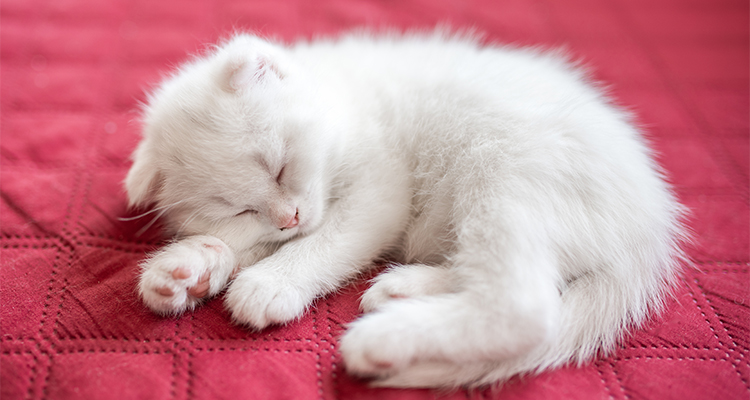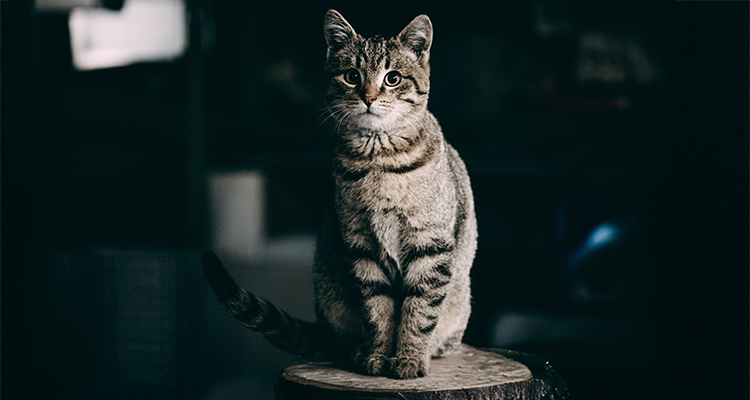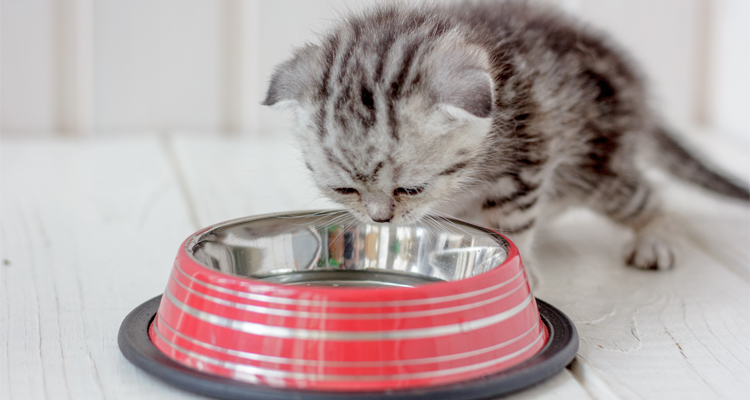

Cats’ tails are brilliant for their balance and co-ordination, but they can also provide a fascinating insight into how your pet might be feeling. Understanding cat tail body language is key to picking up on their communication cues, and reading up on what they might be trying to tell you can help improve your interaction, meet their needs, and build your bond.
In this article, we’ll look at some of the important cat tail language signs, and what they’re trying to say - from a cat purring and wagging their tail, to a puffed-up tail, or twitching cat tail language when lying down vs standing up - to help you decode the meaning behind their movements.
Why do cats have tails?
A cat’s tail helps them balance, provides sensory input from their environment, and helps them communicate with other cats and humans. Cats are known as excellent climbers and are famous for balancing along fences, branches and the like - this is largely due to how the movement of their tail is used expertly for balance. The tail works as a counterweight when cats take on jumping or walk on narrow ledges. The tail also provides warmth, and cats often wrap their tail around their bodies as they curl up to sleep. As well as being a useful agility tool, a cat’s tail can also indicate their mood, so it can be handy for pet owners to understand cat tail body language and what it means.
Cat tail body language
All cats are individuals, and some may wag or twitch their tails more than others, but there are many common cat tail body language positions and motions which can mean your pet is feeling scared, happy, or annoyed. This can indicate what they might do next, or how best you can respond to help reassure them.
My cat’s tail is straight up or in a hook shape
If your cat is walking around with their tail straight up in the air, or in a hook shape, this usually means they’re being friendly and are happy to see you. Some cats will rub around your legs or greet you with a friendly meow. They may be feeling hungry, happy, want to play, or simply wish to be stroked.
My cat’s tail is tucked in
If your cat’s tail is tucked in between their legs when they’re standing, they might be feeling scared, nervous or anxious. Cats do this to protect themselves and to appear smaller and less threatening, and they may flatten their ears back. You could try reassuring your pet using a gentle voice or giving them a quiet, safe space to retreat to. If your cat tucks their tail in when lying down, this may simply be for comfort and warmth.
My cat’s tail is low to the ground
Although some cats may be feeling fearful or uncertain, a drooping tail can indicate that your pet is feeling under the weather. Look for signs of injury or illness, and observe whether they’re eating and drinking as normal, or showing any unusual behaviour. If in doubt, take them to see your vet for a check-up.
My cat’s tail is twitching
Gentle twitching cat tail language when lying down can mean they’re feeling happy and relaxed, but a more rapid twitching can indicate they’re feeling irritated or over-stimulated. If your cat’s tail is twitching whilst they’re standing or walking around, this can mean they’re feeling annoyed, unwell, or they’re ready to play or hunt. Look for other body language signs. Purring cats with relaxed body language are likely to be feeling happy and content, but be aware that they may want you to stop petting them and give them some space. If you’re concerned that your cat is unwell or injured, seek help from your vet.
My cat’s tail is wagging from side to side
If your cat is purring and wagging their tail slowly when lying down or sitting, they are usually feeling secure and content, and may be feeling playful. A more rapid tail swishing can mean they’re annoyed and want you to stop what you’re doing or leave them alone. You may also see your cat’s tail swishing if they encounter unfamiliar animals, or if they’re hunting.
My cat’s tail is puffed out
A puffed-out tail usually means that your cat is very scared. They may become aggressive or want to defend themselves. Cats do this to make themselves look bigger to potential predators or other cats. If they do this towards you, give them space. If your cat is doing this in response to another person or animal, give them a safe, quiet area to retreat to away from what’s frightening them.
How to read your cat's tail language
Observing cat tail body language is a really useful way to help you interpret your cat’s wants, needs, and emotions. It’s important, though, to look at their tail movements alongside other body language cues. Most pet owners know their cat is happy by their relaxed posture, which may be accompanied by some purring and slow tail twitching, but a cat with wide eyes, tense posture, and a twitching tail is more likely to be annoyed or anxious. By picking up on their overall mood, you can use their tail language to help you understand them better and anticipate what they may or may not want - such as more petting, less petting, or simply to be given some space.
Why do cats wag their tails?
Cat purring and wagging tail movements can mean different things, from excitement to playfulness, agitation, anxiety, or affection. Here’s how to work out the why behind the wagging, to better understand your cat’s behaviour.
My cat’s tail is making thrashing movements
Rapid cat tail thrashing means they’re agitated, annoyed, or angry. Some cats use this to warn other animals or people that they dislike something and want them to move away. This may be accompanied by growling, hissing, or flattened ears. Give your cat space and let them calm down in a safe, quiet area.
My cat’s tail is making swishing movements
A swishing tail can mean your cat is feeling annoyed, playful, unwell, excited, or looking to hunt. Observe their stance and body language, and give them space if needed. If your cat is also limping, grooming more or less, off their food or drink, or not wanting affection, it’s best to take them to see a vet to rule out any medical issues.
My cat’s tail is making small wagging movements
Cat tail language when lying down can be different to cats who are on the go. Small, slow twitching can mean happiness, but if this becomes more rapid and jerky, they may be getting irritated and want you to leave them alone. Small twitching movements accompanied by ultra-alert ears can mean they’re hunting, and some cats twitch their tail to indicate they want to play.
Why do cats wrap their tails around you?
Often known as a ‘cat hug’, your cat may wrap their tail around your leg to demonstrate their affection for you. It’s their way of deepening your bond by showing how comfortable they are with you, and it also allows for scent sharing - a cat’s way of marking their trusted territory. This may be accompanied by purring to signal their happiness.
Understanding Cat Tail Language - FAQs
What is a positive cat tail language?
Positive cat tail body language includes small twitching, slow swishing, or a neatly tucked-in tail alongside relaxed body language and/or purring, a tail straight up in the air as they greet you, a tail wrapped around you, or a hook shape indicating affection, happiness, or play time.
Why do cats wag their tails while being petted?
A cat purring and wagging its tail when being stroked shows it’s happy and relaxed. However, if your cat shows tense body language, stops purring, or moves away, they may be overstimulated or getting irritated and may be trying to tell you to back off.
Do cats like their belly rubbed?
Some cats do like their belly being rubbed, but not all. In fact, most cats dislike it, as it puts them in a vulnerable position. Although your cat may roll over and show you their belly if they’re happy and relaxed, they may not necessarily want you to tickle it!







